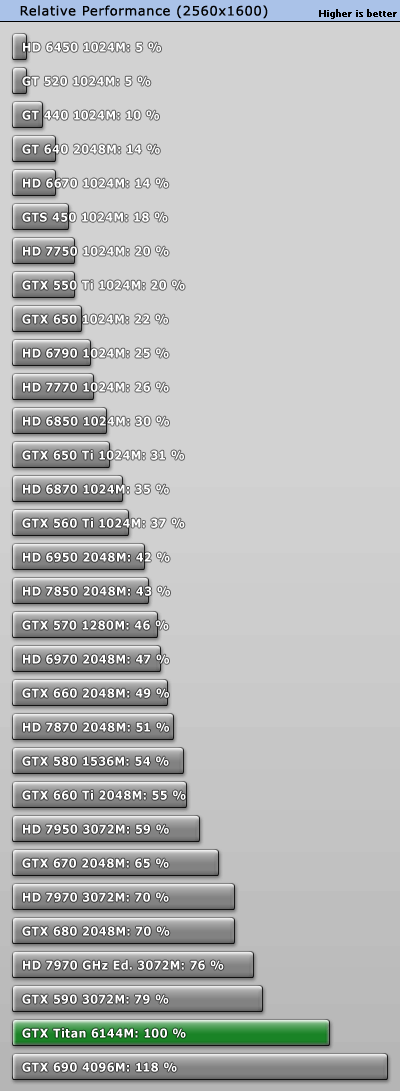First of all, GTX Titan was rated at "Temp Boost" clocks, since that is what most review sites did with Titan. That is what all American review sites most likely did.
Your 3rd source (hardware.fr) and 4th source (computerbase.de) ensured that GTX Titan was already running warm before doing benches. It was explained in
post 54
For Anno 2070, that is a 19% reduction in performance from "rapid test" to "temp stabilized after 5 minutes". PCGamesHardware.de also found the same 19% reduction with Skyrim.
The same Computerbase.de article still shows a "warmed up" Titan being:
37% faster than 7970GE @ 1920x1080 w/ 8xAA
36% faster than 7970GE @ 5760x1080 w/ 8xAA
(which is more than 35% for the
"Temp Boost" rating of 342VP)
However, I would rate the "warmed up" Titan at least 5-10% lower than 342VP. It should be in between 311-327 VP.
Say, 320 VP is only 26% faster than HD 7970GE's 253VP. For games with 19% lower performance than initial rapid test (due to Titan being "warmed up") - think about how much lower it would be (342VP -19% = 287VP). 287VP would be only 13% faster than HD 7970GE's 253VP.
Sadly, only 4 European sites have ensured that Titan was warmed up first when doing benchmark runs, to reflect real-world gameplay. We do not know exactly how much other sites have tested it using temperatures that would be normal after 10-20 minutes of real-world gameplay.
Anandtech shows a 34% performance increase over 7970GE. We do not even know how many times Anandtech repeated benchmark runs one after the other to ensure consistency with the results. Some sites repeat benchmark runs 2-3 times.
AlienBabelTech, which did 89 tests per card (with 30 games plus synthetics), showed a very similar result to Anandtech's overall average. Several other reputable sites (list of Titan reviews:
http://forums.anandtech.com/showthread.php?t=2302828 ) are also showing similar overall averages.
I will be going over HD 7970GE's overall results again to see if they need to be higher with the latest drivers. What kept me from upping the ratings further than what I already did with the Never Settle results was the frametime measurements that really affect gameplay. Geforce cards also suffer a degree of consecutive frametime variance in some games, but it seems that Radeon cards suffer in more games than Geforce so far. As more review sites touch upon this, we will know better for sure.
Thanks- your input is appreciated. If there's more, then please feel free to share! Especially new articles!








